This is likely to be the last roundup of the action in La Liga for the foreseeable future given that the league will be suspended for at least the next two matchdays — and probably longer — due to the coronavirus pandemic. Let's make it a good one.
Espanyol are in trouble
Results have improved at Espanyol since Abelardo became their third head coach of the season at the end of December. They are taking double the number of points per match they did before his arrival. The problem is that the rest of the bottom four have also started to pick up points at a decent clip. Leganés and Mallorca have matched Espanyol’s accumulation; Celta Vigo have taken two more. Espanyol were three points adrift at the bottom when Abelardo took over and five points shy of safety; they are still three points adrift at the bottom, but now six points off safety. Instead of 20 matches to resolve the situation, they now have just 11. In addition, their underlying numbers don't paint a promising picture. In their nine matches under Abelardo, Espanyol have the fourth-worst expected goal difference in the division. Celta Vigo, Leganés and Mallorca all look better by that measure.  Not only that, but compared to the aggregate under his predecessors David Gallego and Pablo Machín, Espanyol’s numbers have actually worsened since Abelardo took charge. Their attacking output has barely changed. The shot profile is a bit different — they now take fewer shots of higher average quality — but the end result is the same. Theirs remains one of the worst attacks in the league.
Not only that, but compared to the aggregate under his predecessors David Gallego and Pablo Machín, Espanyol’s numbers have actually worsened since Abelardo took charge. Their attacking output has barely changed. The shot profile is a bit different — they now take fewer shots of higher average quality — but the end result is the same. Theirs remains one of the worst attacks in the league.  The defence also doesn’t look good. Espanyol concede just over two more shots per match than previously. With barely a shift in the average quality, their xG conceded has risen. The evidence suggests their deeper positioning and more passive approach to defending under Abelardo isn’t really working for them.
The defence also doesn’t look good. Espanyol concede just over two more shots per match than previously. With barely a shift in the average quality, their xG conceded has risen. The evidence suggests their deeper positioning and more passive approach to defending under Abelardo isn’t really working for them.  Espanyol are running 2.5 goals ahead of their xG difference since Abelardo came in. Given that their current rate of points accumulation hasn't improved their position, any drift back toward the underlying numbers would likely finish them off. Their 26-season stay in the top flight could well be coming to an end.
Espanyol are running 2.5 goals ahead of their xG difference since Abelardo came in. Given that their current rate of points accumulation hasn't improved their position, any drift back toward the underlying numbers would likely finish them off. Their 26-season stay in the top flight could well be coming to an end.
Eibar might be too
The knock-on effect of the bottom four increasing their points rate is that Eibar have been dragged back down into the relegation contest. After a 2–1 home defeat to Real Sociedad on Tuesday, they are now just two points clear of the bottom three. Over the full course of the campaign, Eibar’s underlying numbers are the second-worst in the league. That is quite a dropoff given they had the sixth-best xG difference last season.  Things have improved a bit since I wrote about their concerning start to the season. Eibar carried an awful -0.71 xG difference per match through their first 10 matches of the campaign. Their attack had cratered, and their defensive numbers were barely better.
Things have improved a bit since I wrote about their concerning start to the season. Eibar carried an awful -0.71 xG difference per match through their first 10 matches of the campaign. Their attack had cratered, and their defensive numbers were barely better.  They've stabilised a bit since. Across their subsequent 17 matches, their attacking numbers have shot up from a paltry 0.66 xG per match to an almost league average 1.01 xG. Coupled with a marginal defensive improvement, they are now the sixth-worst team in the league by the underlying numbers. But it hasn’t been enough to see off the threat of relegation nor to placate irascible head coach José Luis Mendilibar. Tuesday’s fixture was the first Primera División encounter played behind closed doors due to the coronavirus outbreak. If that set up had continued, it likely wouldn’t have been long before the pitch-side microphones were shut off during Eibar matches given the volume of frustrated “bloody hells” that emanate from their bench. Things are tightly positioned toward the bottom of the table and the gains Eibar have made as the season has gone on mean little when they remain one of the five or six worst teams in the division. Relegation is still a real and present threat. Even if they do survive, a lot needs to change if they are to avoid an equally uncomfortable campaign next season. On a minutes-weighted basis, Eibar had the oldest squad in La Liga last season, and they still do — it’s just that most of them are now another year older. Three of their four most-used outfield players will be 33 or more by the end of the season. Only two players under the age of 27 receive significant minutes.
They've stabilised a bit since. Across their subsequent 17 matches, their attacking numbers have shot up from a paltry 0.66 xG per match to an almost league average 1.01 xG. Coupled with a marginal defensive improvement, they are now the sixth-worst team in the league by the underlying numbers. But it hasn’t been enough to see off the threat of relegation nor to placate irascible head coach José Luis Mendilibar. Tuesday’s fixture was the first Primera División encounter played behind closed doors due to the coronavirus outbreak. If that set up had continued, it likely wouldn’t have been long before the pitch-side microphones were shut off during Eibar matches given the volume of frustrated “bloody hells” that emanate from their bench. Things are tightly positioned toward the bottom of the table and the gains Eibar have made as the season has gone on mean little when they remain one of the five or six worst teams in the division. Relegation is still a real and present threat. Even if they do survive, a lot needs to change if they are to avoid an equally uncomfortable campaign next season. On a minutes-weighted basis, Eibar had the oldest squad in La Liga last season, and they still do — it’s just that most of them are now another year older. Three of their four most-used outfield players will be 33 or more by the end of the season. Only two players under the age of 27 receive significant minutes.  The squad needs a significant refresh this summer regardless of whether or not Mendilibar stays on. He's been in charge since 2015, but has consistently signed just one-year extensions. Maybe this will be the year he decides to call it quits.
The squad needs a significant refresh this summer regardless of whether or not Mendilibar stays on. He's been in charge since 2015, but has consistently signed just one-year extensions. Maybe this will be the year he decides to call it quits.
Shot counts, shot shares and bad shots
The shot count in Getafe’s 0–0 draw at home to Celta Vigo on Saturday really stood out. Despite taking 19 shots to Celta’s four, a near 83% share, Getafe were unable to find a way through. Their expected goals tally of just 1.10 provided an early clue as to why. Three things seemed fairly unique: a failure to win with such a high shot share, an inability to score from so many shots, and such a small xG from that volume of efforts. The fixture was actually the 13th in La Liga this season in which one of the teams took 80% or more of the shots. The highest share was recorded by Osasuna in their 3–1 win at home to Valencia in October in which they took almost 90% (28–3). Only two teams have taken a larger proportion than Getafe did against Celta whilst failing to win: Sevilla’s 89.5% share in their 1–1 draw with Celta in August, and Leganés’ 84.6% share in a 0–0 with Real Betis last month. Just six teams have attempted more efforts on goal without scoring. The highest tally came in Villarreal’s 0–0 draw at home to Atlético Madrid in December. Villarreal took 23 shots to Atlético’s 18 that day. How an earth did this end scoreless?  Real Madrid have twice taken 20 or more shots without reward, at home to Betis and Athletic Club. On both occasions, they racked up north of 2.4 xG — the two highest xG sums without scoring this season, and by some margin at that. Getafe’s tally was much lower. Their shot locations were far from great, and Celta had a good number of bodies goalside when they did shoot from decent positions. Only Nemanja Maksimović’s early second-half effort wide from a Jorge Molina cutback was even a one-in-five chance.
Real Madrid have twice taken 20 or more shots without reward, at home to Betis and Athletic Club. On both occasions, they racked up north of 2.4 xG — the two highest xG sums without scoring this season, and by some margin at that. Getafe’s tally was much lower. Their shot locations were far from great, and Celta had a good number of bodies goalside when they did shoot from decent positions. Only Nemanja Maksimović’s early second-half effort wide from a Jorge Molina cutback was even a one-in-five chance.  But their average xG per shot of 0.058 doesn’t actually rank that low amongst all occasions when a team took more than a league-average (11.19) number of shots this season. Fourteenth in fact. The worst? Mallorca barely mustered half a goal of xG from 16 shots in a home loss to Real Valladolid last month. Now these really aren’t good shots.
But their average xG per shot of 0.058 doesn’t actually rank that low amongst all occasions when a team took more than a league-average (11.19) number of shots this season. Fourteenth in fact. The worst? Mallorca barely mustered half a goal of xG from 16 shots in a home loss to Real Valladolid last month. Now these really aren’t good shots. 
















 Spurs' problems have been well documented over the past month, with the side basically giving back all of the performance gains that new manager José Mourinho initially brought with him
Spurs' problems have been well documented over the past month, with the side basically giving back all of the performance gains that new manager José Mourinho initially brought with him  The team's injury crisis is apparent with January signing Steven Bergwijn joining Harry Kane and Son Heung-min on the sideline. Domestically, especially against teams with less talent, there’s room for debate about whether or not Mourinho could make certain tactical choices to get the most out of his remaining squad. Against Leipzig, however, the team is in a bind. With so few healthy attackers, and no true forward to speak of, Spurs simply cannot execute Mourinho’s desired approach of bending but not breaking and then counterattacking at lightning speed. They have no one to counterattack through. Conversely, if they try to hold the ball against Leipzig, they'd have both trouble moving it up the field and a lack of presence in the box to act as a focal point. Meanwhile, they’d expose themselves to a lightning-fast and efficient counterattack from the German side. Meanwhile, for Leipzig, while it’s the team’s attack that often garners attention, their defense is what will likely be on display as they attempt to see out the tie. And the team defends very very well. They’re a classic shot-suppression side, conceding the second-fewest shots in Germany.
The team's injury crisis is apparent with January signing Steven Bergwijn joining Harry Kane and Son Heung-min on the sideline. Domestically, especially against teams with less talent, there’s room for debate about whether or not Mourinho could make certain tactical choices to get the most out of his remaining squad. Against Leipzig, however, the team is in a bind. With so few healthy attackers, and no true forward to speak of, Spurs simply cannot execute Mourinho’s desired approach of bending but not breaking and then counterattacking at lightning speed. They have no one to counterattack through. Conversely, if they try to hold the ball against Leipzig, they'd have both trouble moving it up the field and a lack of presence in the box to act as a focal point. Meanwhile, they’d expose themselves to a lightning-fast and efficient counterattack from the German side. Meanwhile, for Leipzig, while it’s the team’s attack that often garners attention, their defense is what will likely be on display as they attempt to see out the tie. And the team defends very very well. They’re a classic shot-suppression side, conceding the second-fewest shots in Germany.  Leipzig want to defend far from their own goal, and to force teams to beat an aggressive press to create chances.
Leipzig want to defend far from their own goal, and to force teams to beat an aggressive press to create chances.  That’s why this task is so daunting for Mourinho. He’s a manager that normally is happy to play against an aggressive pressing team. He wants to invite pressure and then beat it through the combination of a target forward and a speedy attacking winger executing fast and efficient counterattacks. Unfortunately for Spurs, their target forward and fast creative winger won’t be playing. For Tottenham to have a chance at staging a comeback they'll have to solve the exact problem that’s been hounding this side for weeks. They’re going to need to break a press without press breakers.
That’s why this task is so daunting for Mourinho. He’s a manager that normally is happy to play against an aggressive pressing team. He wants to invite pressure and then beat it through the combination of a target forward and a speedy attacking winger executing fast and efficient counterattacks. Unfortunately for Spurs, their target forward and fast creative winger won’t be playing. For Tottenham to have a chance at staging a comeback they'll have to solve the exact problem that’s been hounding this side for weeks. They’re going to need to break a press without press breakers.  The usual pattern of a match like this would be Valencia, trailing at home, would have a ton of the ball and Atalanta would try to defend against a desperate onslaught and put the game away on the counter. A number of famous comebacks over the last few seasons have followed this pattern and resulted in the trailing team getting a needed result. But neither Valencia nor Atalanta fit that mould. Atalanta are addicted to having the ball. And Valencia are one of the deepest defending teams in the world. If Valencia do stage a major comeback it would be because Atalanta simply don’t have the capacity to play cautiously and Valencia manage to take advantage three times. The team does have the fourth-highest expected goals per shot value in La Liga, so a comeback is not out of the realm of possibility.
The usual pattern of a match like this would be Valencia, trailing at home, would have a ton of the ball and Atalanta would try to defend against a desperate onslaught and put the game away on the counter. A number of famous comebacks over the last few seasons have followed this pattern and resulted in the trailing team getting a needed result. But neither Valencia nor Atalanta fit that mould. Atalanta are addicted to having the ball. And Valencia are one of the deepest defending teams in the world. If Valencia do stage a major comeback it would be because Atalanta simply don’t have the capacity to play cautiously and Valencia manage to take advantage three times. The team does have the fourth-highest expected goals per shot value in La Liga, so a comeback is not out of the realm of possibility.  The most likely outcome is that Atalanta just keep on scoring and win this battle easily. The side puts up the kinds of attacking totals that any team in the world would be proud of. It’s hard to imagine they won’t put one or two past Valencia unless they end up confronted with a terrible finishing streak. Stranger things have happened, but there’s no reason to expect it.
The most likely outcome is that Atalanta just keep on scoring and win this battle easily. The side puts up the kinds of attacking totals that any team in the world would be proud of. It’s hard to imagine they won’t put one or two past Valencia unless they end up confronted with a terrible finishing streak. Stranger things have happened, but there’s no reason to expect it. 



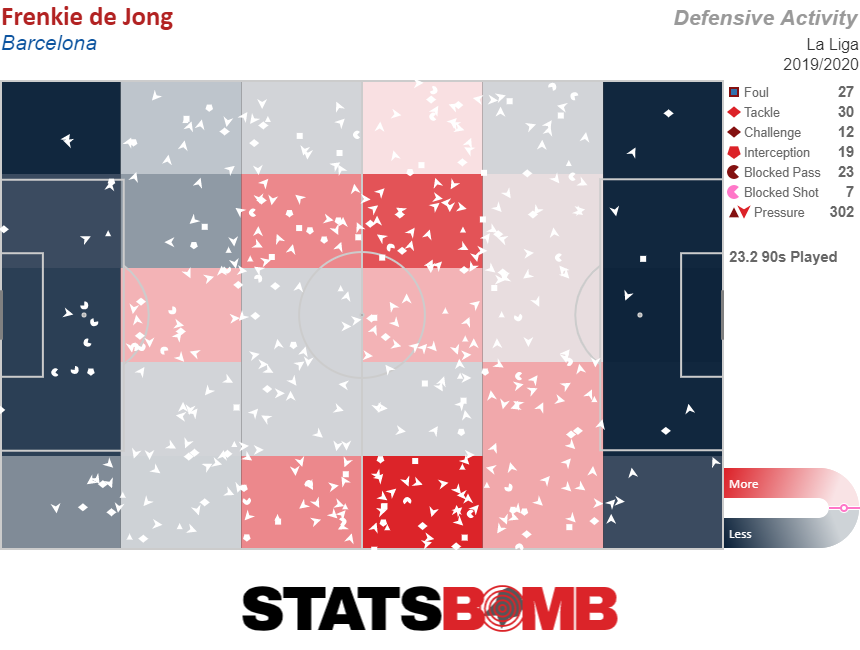



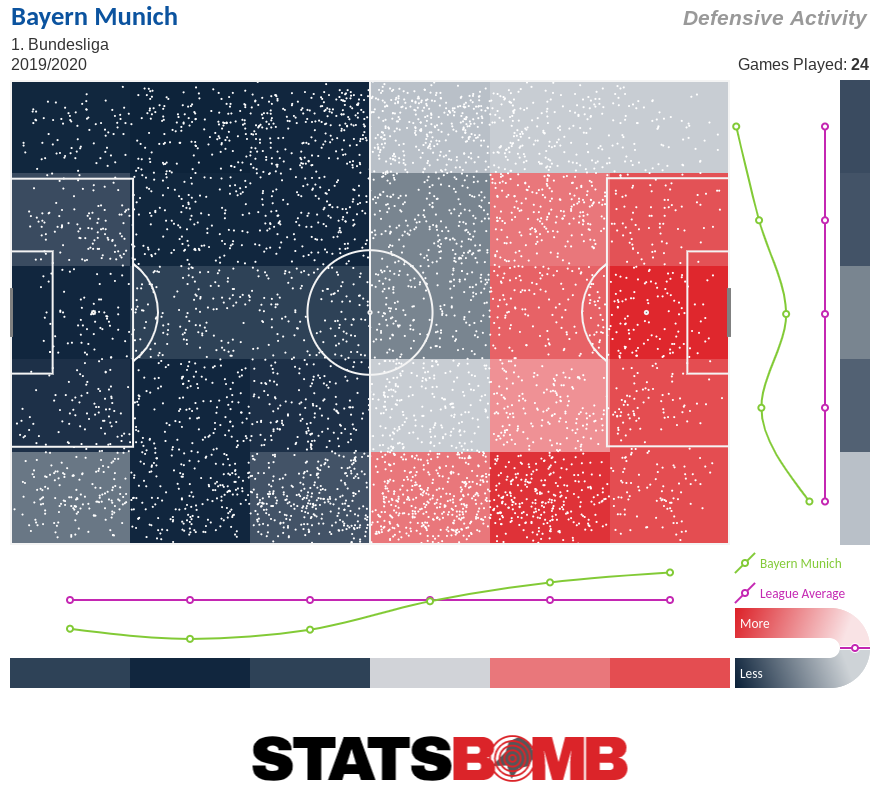






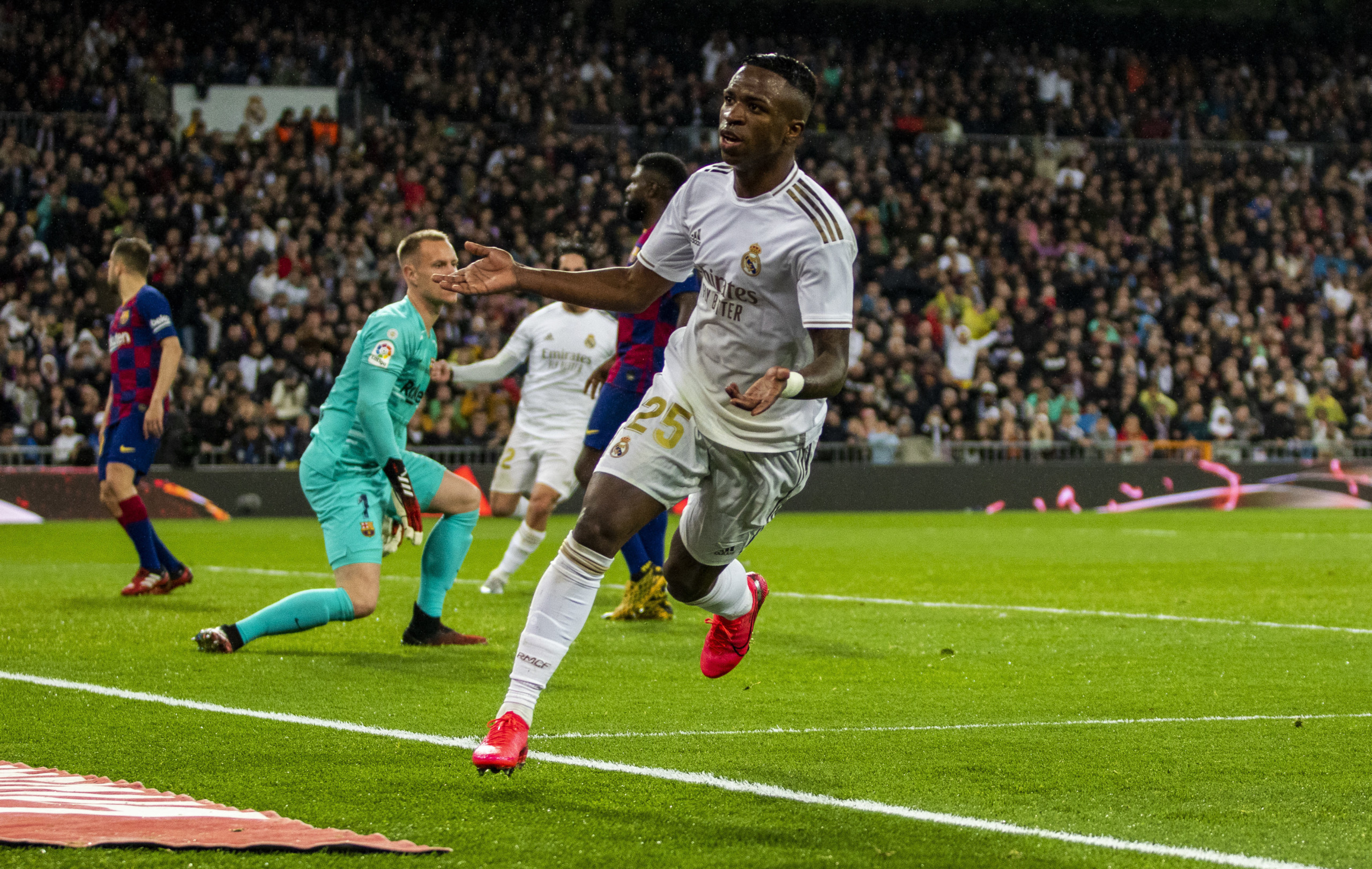








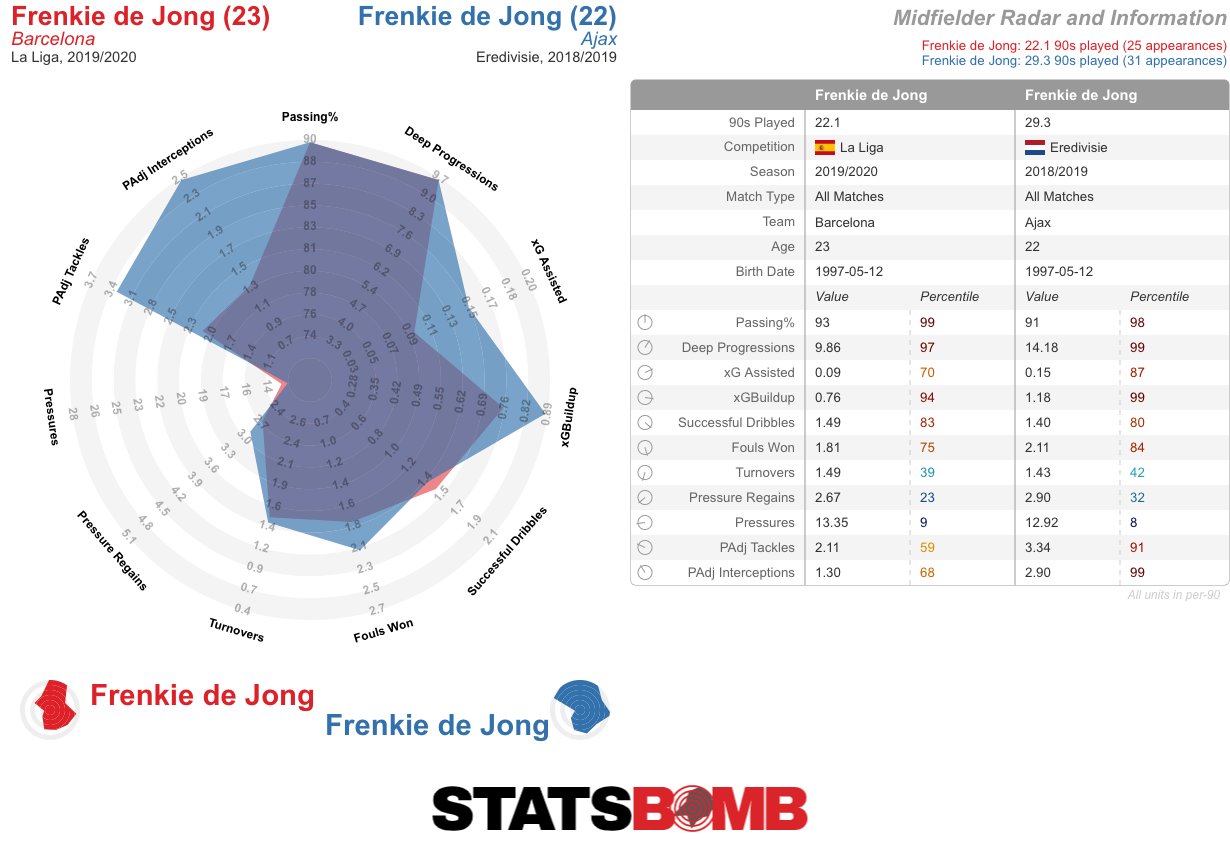


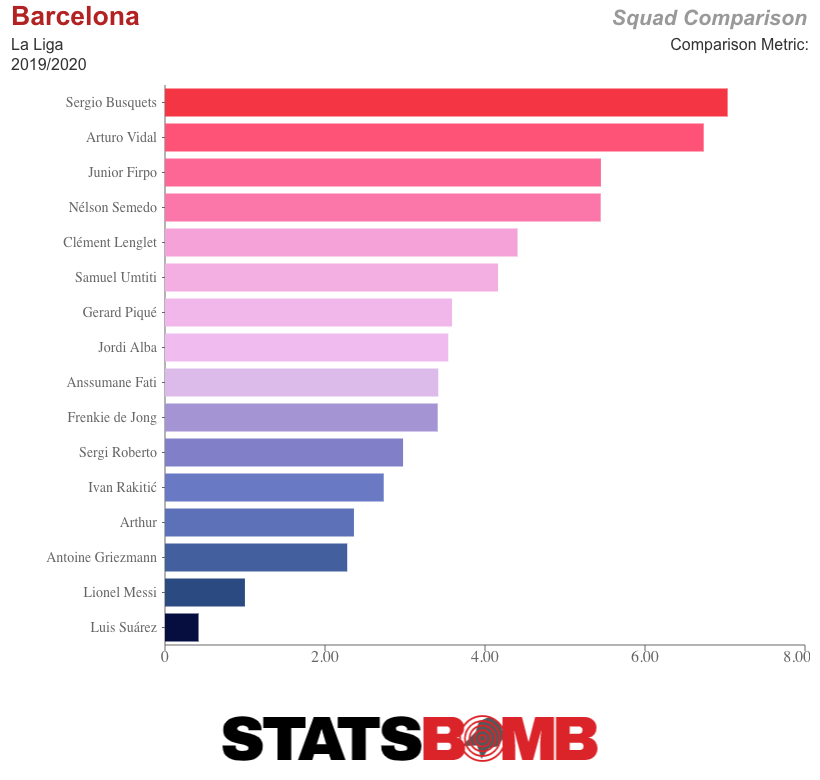
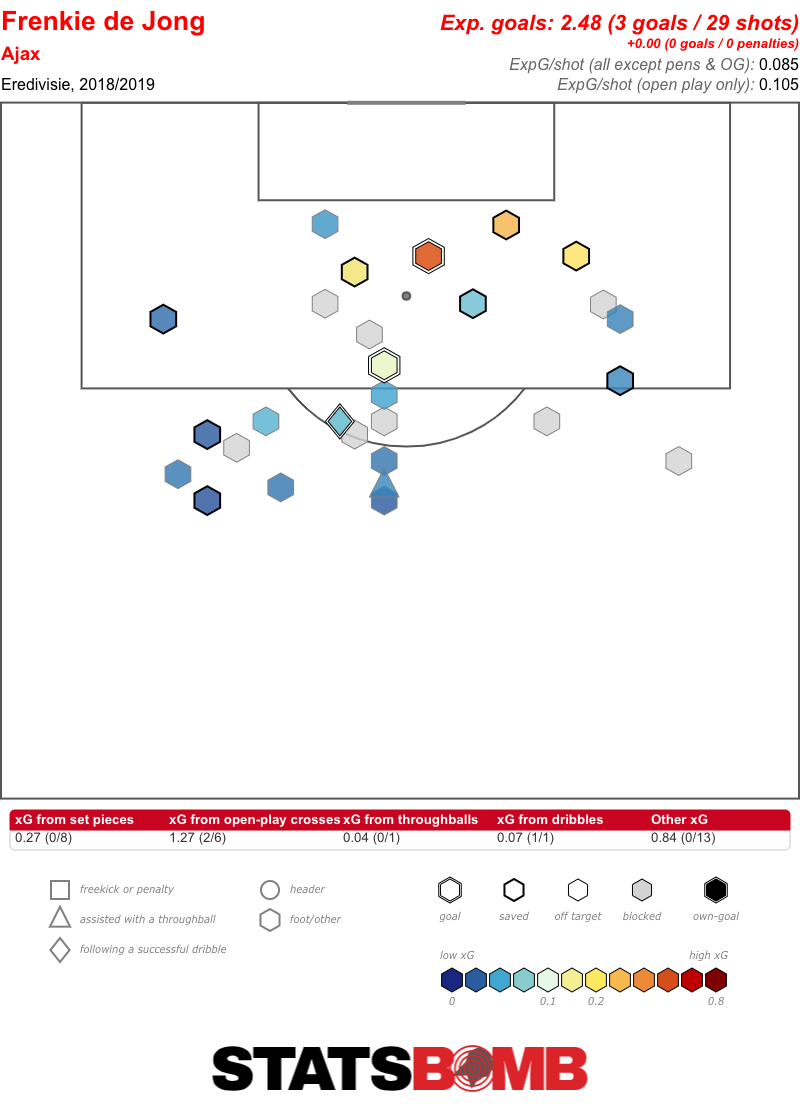
 More importantly, de Jong’s passing has become less vertical, particularly so inside the final third. At Ajax, depending on the competition, 20–22% of his passes in all areas were aimed forward, as were 28–29% of those inside the final third. At Barcelona, those percentages have dropped to 14% and 17%, respectively.
More importantly, de Jong’s passing has become less vertical, particularly so inside the final third. At Ajax, depending on the competition, 20–22% of his passes in all areas were aimed forward, as were 28–29% of those inside the final third. At Barcelona, those percentages have dropped to 14% and 17%, respectively.










 Given that you’d expect that perhaps the side either massively overperformed their expected goals last season or were massively underperforming it this year. But, that’s not particularly true either. In fact while City have had stretches where they’ve been over xG, sometimes by quite a lot, they haven’t had very many long periods where they’ve been classic underperformers.
Given that you’d expect that perhaps the side either massively overperformed their expected goals last season or were massively underperforming it this year. But, that’s not particularly true either. In fact while City have had stretches where they’ve been over xG, sometimes by quite a lot, they haven’t had very many long periods where they’ve been classic underperformers.  What we can see on the chart from this season and last is that while City did run pretty hot early in the 2018-19 season, what we’ve seen is the side’s goal difference converge with it’s xG difference (which is gratifying to stats nerds since that’s exactly what’s supposed to happen), while that xG average has fluctuated around a relatively consistent level. But, just because those topline numbers are only minorly different, doesn’t mean there isn’t more to investigate under the hood. Prying apart those xG numbers show a team which has some major differences in both performance and execution year over year. During City’s great 2018-19 season they ran way over expectation when the match was tied, putting up 39 goals from 27.15 xG. It’s nice work if you can get it. Last season, City was the best team while also getting fortuitous bounces that regularly put Pep Guardiola’s side ahead.
What we can see on the chart from this season and last is that while City did run pretty hot early in the 2018-19 season, what we’ve seen is the side’s goal difference converge with it’s xG difference (which is gratifying to stats nerds since that’s exactly what’s supposed to happen), while that xG average has fluctuated around a relatively consistent level. But, just because those topline numbers are only minorly different, doesn’t mean there isn’t more to investigate under the hood. Prying apart those xG numbers show a team which has some major differences in both performance and execution year over year. During City’s great 2018-19 season they ran way over expectation when the match was tied, putting up 39 goals from 27.15 xG. It’s nice work if you can get it. Last season, City was the best team while also getting fortuitous bounces that regularly put Pep Guardiola’s side ahead.  This season is a different story. City are actually slightly below their xG when drawing, 24 goals from 25.80 expected.
This season is a different story. City are actually slightly below their xG when drawing, 24 goals from 25.80 expected.  The natural result of these differing fortunes is that even when they do ultimately pull ahead it’s taking longer for them to do so. That means just by dint of being tied longer, they’re giving up more goal scoring opportunities and risking falling behind more than they did last season. Already this season they’ve conceded nine goals from just under eight xG.
The natural result of these differing fortunes is that even when they do ultimately pull ahead it’s taking longer for them to do so. That means just by dint of being tied longer, they’re giving up more goal scoring opportunities and risking falling behind more than they did last season. Already this season they’ve conceded nine goals from just under eight xG.  All of last season they only conceded five from just over 7 xG
All of last season they only conceded five from just over 7 xG  This is one of the ways that variance and actual performance levels are inextricably intertwined. It is absolutely fair to say that City have been a worse defensive team when they’ve been drawing this season than last. But the only reason for that is that they’ve had a harder time scoring goals, due to what appears to be a natural swing in variance. Luck, or lack thereof, in one part of the pitch leads to actual deterioration in another. There are of course other factors at play. There have been real personnel changes, with Fernandinho aging out of central midfield and injuries across the defensive line. Perhaps relatedly, the teams defensive solidity has suffered. Specifically, teams complete more passes and create somewhat more high quality shots when they break through City’s outstanding aggressive press.
This is one of the ways that variance and actual performance levels are inextricably intertwined. It is absolutely fair to say that City have been a worse defensive team when they’ve been drawing this season than last. But the only reason for that is that they’ve had a harder time scoring goals, due to what appears to be a natural swing in variance. Luck, or lack thereof, in one part of the pitch leads to actual deterioration in another. There are of course other factors at play. There have been real personnel changes, with Fernandinho aging out of central midfield and injuries across the defensive line. Perhaps relatedly, the teams defensive solidity has suffered. Specifically, teams complete more passes and create somewhat more high quality shots when they break through City’s outstanding aggressive press. 

